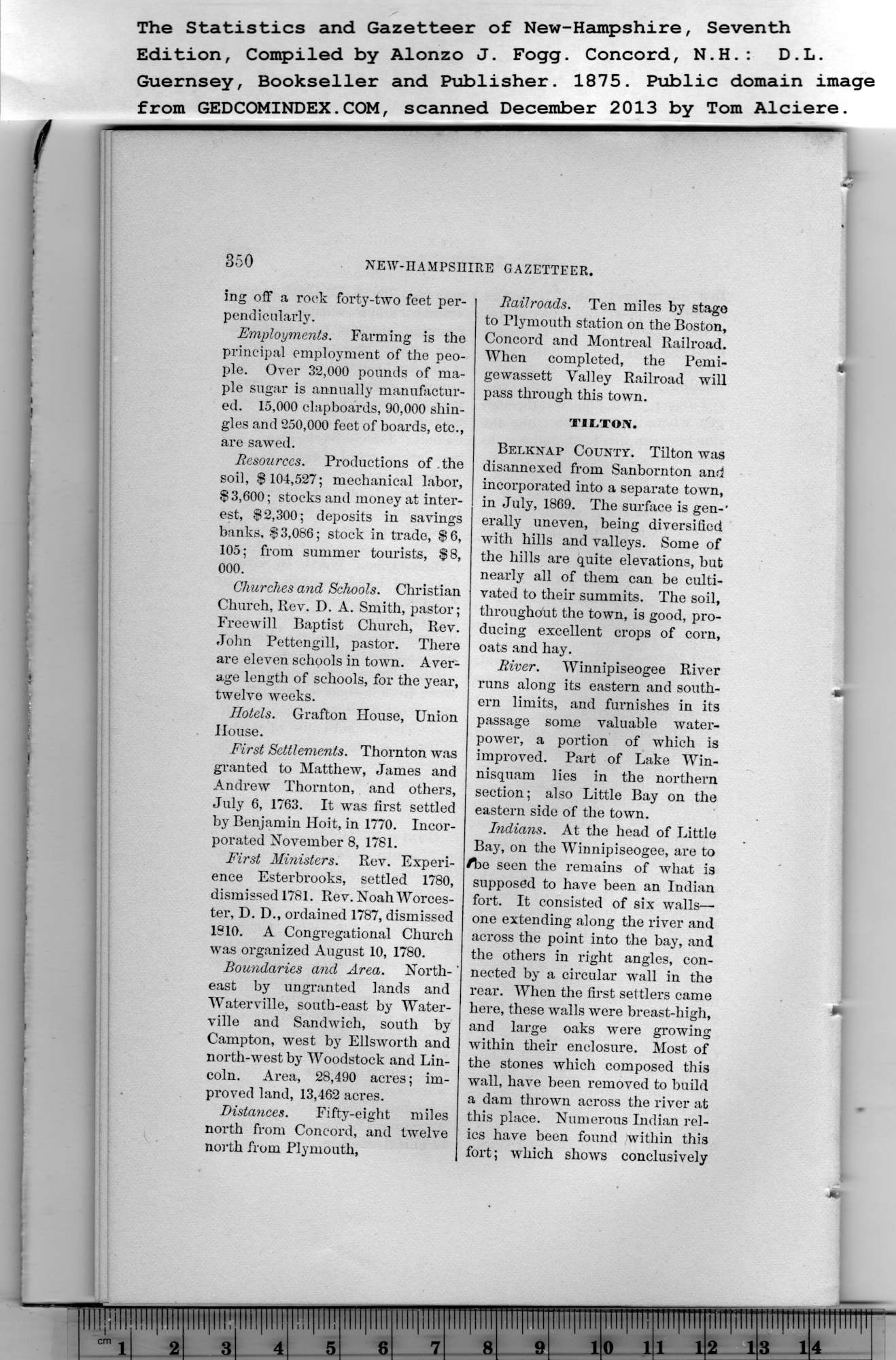|
ing off a rock forty-two feet per-
pendicularly.
Employments. Farming is the
principal employment of the peo-
ple. Over 32,000 pounds of ma-
ple sugar is annually manufactur-
ed. 15,000 clapboards, 90,000 shin-
gles and 250,000 feet of boards, etc.,
are sawed.
Resources. Productions of .the
soil, $ 104,527; mechanical labor,
$ 3,600; stocks and money at inter-
est, $2,300; deposits in savings
banks, $ 3,086; stock in trade, $ 6,
105; from summer tourists, $8,
000.
Churches and Schools. Christian
Church, Rev. D. A. Smith, pastor;
Freewill Baptist Church, Rev.
John Pettengill, pastor. There
are eleven schools in town. Aver-
age length of schools, for the year,
twelve weeks.
Hotels. Grafton House, Union
House.
First Settlements. Thornton was
granted to Matthew, James and
Andrew Thornton, and others,
July 6, 1763. It was first settled
by Benjamin Hoit, in 1770. Incor-
porated November 8, 1781.
First Ministers. Rev. Experi-
ence Esterbrooks, settled 1780,
dismissed 1781. Rev. Noah Worces-
ter, D. D., ordained 1787, dismissed
1810. A Congregational Church
was organized August 10, 1780.
Boundaries and Area. North- ‘
east by ungranted lands and
Waterville, south-east by Water-
ville and Sandwich, south by
Campton, west by Ellsworth and
north-west by Woodstock and Lin-
coln. Area, 28,490 acres; im-
proved land, 13,462 acres.
Distances. Fifty-eight miles
north from Concord, and twelve
north from Plymouth, |
Railroads. Ten miles by stage
to Plymouth station on the Boston,
Concord and Montreal Railroad.
When completed, the Pemi-
gewassett Valley Railroad will
pass through this town.
TILTON.
Belknap County. Tilton was
disannexed from Sanbornton and
incorporated into a separate town,
in July, 1869. The surface is gen-’
erally uneven, being diversified
with hills and valleys. Some of
the hills are quite elevations, but
nearly all of them can be culti-
vated to their summits. The soil,
throughout the town, is good, pro-
ducing excellent crops of corn,
oats and hay.
River. Winnipiseogee River
runs along its eastern and south-
ern limits, and furnishes in its
passage some valuable water-
power, a portion of which is
improved. Part of Lake Win-
nisquam lies in the northern
section; also Little Bay on the
eastern side of the town.
Indians. At the head of Little
Bay, on the Winnipiseogee, are to
fbe seen the remains of what is
supposed to have been an Indian
fort. It consisted of six walls—
one extending along the river and
across the point into the bay, and
the others in right angles, con-
nected by a circular wall in the
rear. When the first settlers came
here, these walls were breast-high,
and large oaks were growing
within their enclosure. Most of
the stones which composed this
wall, have been removed to build
a dam thrown across the river at
this place. Numerous Indian rel-
ics have been found within this
fort; which shows conclusively |
